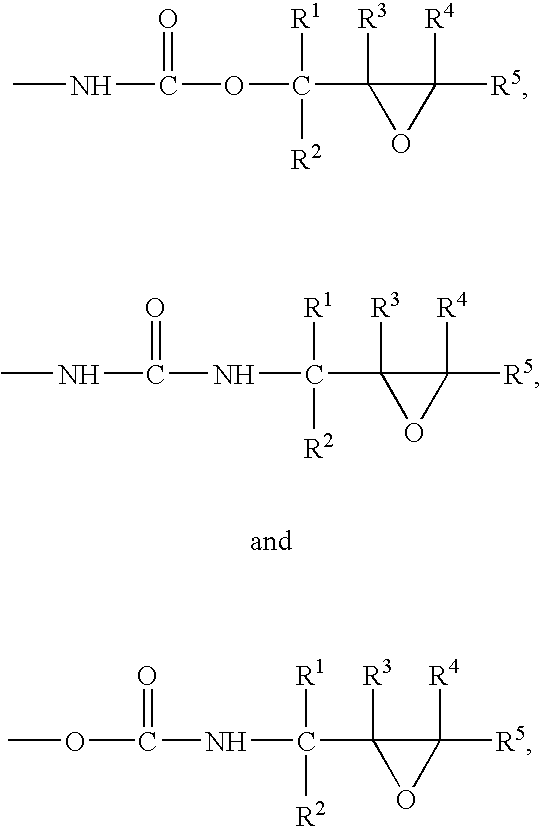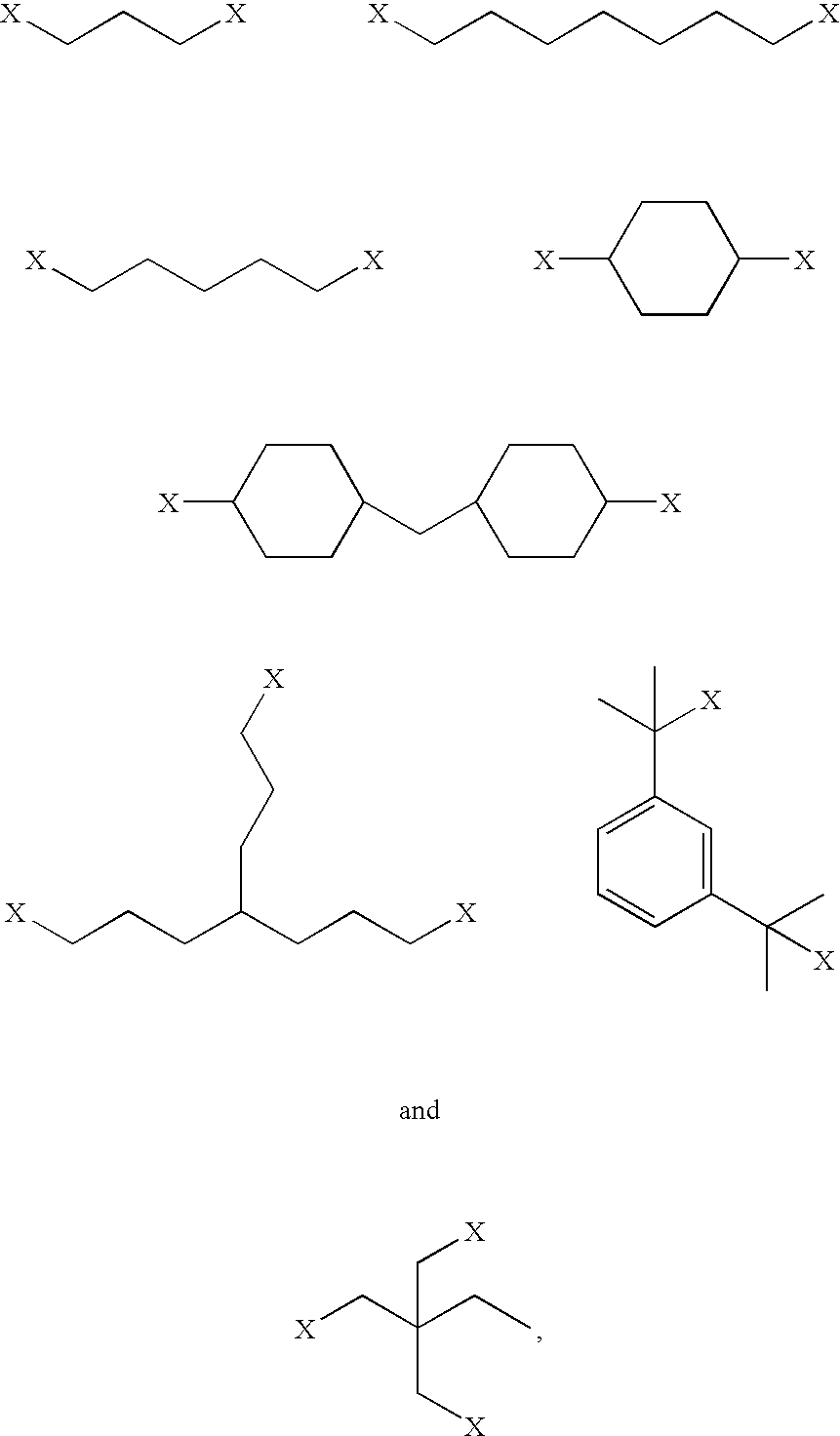Powder coatings containing oxirane groups beta to urethane or urea groups
a technology of oxirane groups and powder coatings, which is applied in the direction of pretreatment surfaces, textiles and paper, synthetic resin layered products, etc., can solve the problems of not mentioning powder coatings or addressing problems, and undesirable yellowing in those layers, so as to reduce overbake yellowing of topcoats and improve the cure response. , the effect of excellent leveling and smoothness
- Summary
- Abstract
- Description
- Claims
- Application Information
AI Technical Summary
Benefits of technology
Problems solved by technology
Method used
Image
Examples
example 1
Preparation of Material with Epoxide Functionality Beta to Urethane Groups
A mixture of 48.7 parts by weight of anhydrous methyl propyl ketone and 26.7 parts by weight of hexamethylene diisocyanate was heated to 50° C. under an inert atmosphere. At that temperature, 0.03 parts by weight of dibutyl tin dilaurate were first added, followed by a slow addition of 22.4 parts by weight of glycidol. The reaction temperature was allowed to reach 75° C. during the glycidol addition. The reaction temperature was increased to 80° C. and held until all the glycidol was consumed. A small amount, 2.2 parts by weight, of n-butanol was then added. When the reaction was complete, the solvent medium and excess n-butanol were removed by vacuum distillation to obtain a solid product with a melting point of about 81° C.
example 2
Powder Coating According to the Invention
A powder coating was prepared by melt mixing 27.87 parts by weight of a polyester resin (acid number=34), 3.8 parts by weight of the material with epoxide functionality beta to urethane groups prepared in Example 1, 5.44 parts by weight of an acrylic resin (acid number=75, weight average molecular weight of about 15,000), 0.18 parts by weight benzoin, 15 parts by weight of an epoxy resin based on hydrogenated bisphenol A (EEW=1039), 0.88 parts by weight of a flow agent, 0.22 parts by weight trimethylolpropane, 0.54 parts by weight of a light stabilizer package, 17.8 parts by weight of titanium dioxide pigment, 0.04 parts by weight of tinting pigments, and 17.8 parts by weight of barium sulfate filler. The melt mixture was solidified and crushed, then retch milled. The milled material was sieved through a 70 micron screen.
The resulting powder coating was sprayed onto test panels 4 inches by 12 inches, and tested against the comparative powder ...
PUM
| Property | Measurement | Unit |
|---|---|---|
| melting point | aaaaa | aaaaa |
| composition | aaaaa | aaaaa |
| metallic | aaaaa | aaaaa |
Abstract
Description
Claims
Application Information
 Login to View More
Login to View More - R&D
- Intellectual Property
- Life Sciences
- Materials
- Tech Scout
- Unparalleled Data Quality
- Higher Quality Content
- 60% Fewer Hallucinations
Browse by: Latest US Patents, China's latest patents, Technical Efficacy Thesaurus, Application Domain, Technology Topic, Popular Technical Reports.
© 2025 PatSnap. All rights reserved.Legal|Privacy policy|Modern Slavery Act Transparency Statement|Sitemap|About US| Contact US: help@patsnap.com



